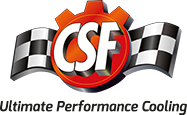Track Photos: Evasive Motorsports
Long before Evasive Motorsports became synonymous with the automotive performance scene, company founders Tony Kwan and Mike Chang were car nerds similar to you and I. Fresh-faced and full of life, both men spent much of their weekends and late nights wrenching on their own vehicles as well as those of local friends out of their personal garage. When opportunity came knocking in 2002, the pair pooled their resources together and opened their first storefront, in a modest 1,000 square-foot facility located east of Los Angeles in Walnut, California. Today, the company occupies over 12,000 square feet of industrial property in Santa Fe Springs, California.
The name Evasive Motorsports – otherwise known as Evasive Tuning – was envisioned by Kwan as he defined the meaning behind its name: “You can always try to catch us but we’re always one step ahead of the game.” Today, Evasive Motorsports is dominant in many different motorsports arenas.

“At Evasive, we focus on the overall balance of a vehicle, not solely on pure horsepower. This has been our motto since day one and something we continue to uphold to this day,” says Chang. The culmination of years of race development is based on countless track hours spent to set up their company race car chassis, aero, engine modifications and tuning to all work in perfect harmony.


Using valuable data and track analysis recorded on every lap and shakedown session on numerous tracks around the world – even competing on the famous Tsukuba Circuit in Japan – has paid dividends for the Evasive crew. They stand toe-to-toe at numerous sanctioned road-race events against veteran race shops from across the world as they continue to reset and even break their own course records on a regular basis.


Historic highlights include setting track records at the famous Buttonwillow Raceway Park, using the CW13 configuration. It includes owning multiple class records for fastest RWD Street Honda S2000, which remained unbroken for three years, a Limited AWD class record in their EVO 8 that stood unbroken for two years running, and a record set in 2014 which currently stands, in the Limited RWD class, with the record for fastest Scion FRS with a lap time of 1.47.474 seconds. Throw in multiple Pikes Peak builds over the last four years and it’s easy to see how Evasive Motorsports has become a force to be reckoned with.


Fast forward to present day; as Evasive Motorsports has quickly grown into a successful business, the company sports a loyal customer base, with their customers in hitting the track in everything from lightly-modded Hondas to more exotic European sports cars.

Evasive Motorsports has maintained a strong partnership with Turn 14 Distribution. The company has collaborated with Turn 14 Distribution on a number of builds, in including Evasive’s multiple time attack and Pikes Peak race cars.
Evasive GT-R V1.0 – The Initial Build
We had a chance to sit down with Mike Chang and chief technician Jason “JJ” Reinholdt – in charge of this GT-R engine build – for a candid interview on what it takes to build a competitive road race car and what’s in store for the newest Evasive Motorsports car.

A good portion of time was spent addressing and upgrading cooling modifications for oil and water. It’s a known fact that oil cooling and transmission over heating are known issues with the GT-R, so a custom Evasive oil cooler, GReddy DCT transmission cooler, Koyo radiator, and larger GReddy intercooler and full piping kit were installed to free up horsepower while warding off potential engine-damaging heat.



A full GReddy turbo-back exhaust system with GReddy Supreme Titanium center exit canister was redesigned by Evasive to work with a Ben Sopra race-version body kit. This kit uses a rear splitter to eliminate air turbulence under the car and maximize on-track grip. Although the body kit gives the GT-R a more aggressive demeanor, by no means was it a simple bolt-on affair, as extensive modifications were made including a redesigned chassis-mounted dry carbon front splitter, improved front carbon fiber ducting for oil and trans cooling, added wheel spats to improve airflow, Voltex canard diffusers and the addition of a carbon fiber Voltex Type 7 Swan Neck GT wing.

Advan GT wheels are wrapped in a set of Yokohama Advan slicks, while Tein Super Racing 3-way coilovers with Active EDFC Pro and full SPL arms and spherical bushings complete the suspension package. For Limited competition, though, the car will run on Nitto NT01 315/30-20 inch tires.


The factory ECU was retuned using a Cobb Accessport on E85 fuel. With JJ manipulating both fuel and ignition time tables from his trusty laptop, the GT-R was rewarded with a boost in horsepower and now produces 600awhp at 18 psi of boost pressure.
“For a GT-R, that might seem not like a lot of power, but knowing a stock GT-R produces approximately 450awhp on our dyno, we are satisfied with the current power level,” says Reinholdt.


“Driving the car on numerous tracks with our current setup, the car feels really well sorted. It could use a little more power which it the main reason why we are building this engine but it is fast enough for most enthusiasts. The cornering speed is very high and stable. The custom Evasive front splitter and rear Voltex wing helps stabilize the car through the high speed sections of the track while the low speed sections you can feel the differential and electronics working its magic so the understeer is minimal. We’ve set up the car where it rotates really well,” says Chang.

So we asked: Why – if the car handles and performs well – fix something that isn’t broke?
“I think it raises awareness, especially in the US there is a lack of GT-Rs that road race or do this type of racing in general. GT-R owners are more about how much horsepower can they make and can they put it down in a straight line. Don’t get me wrong, it takes a lot of engineering to go straight too, but I think people should realize that this was built for the track and for handling. It’s a car that Nissan designed for people to be able to experience the entire car, not limiting it to just a horsepower game or suited for drag racing purposes only. We’re building this car in hopes of setting an example of how to build a GT-R that others can follow suit on a well-balanced car not just based on massive power,” Chang explains.
Evasive GT-R V2.0 – The Awakening
Once the decision was made to prepare the Evasive R35 GT-R for the 2017 race season, the Evasive crew decisively detailed their scheduled race program and plans to rebuild their R35. As the specifics were ironed out, the project GT-R V2.0 was given the green light and orders were placed with Turn 14 Distribution to secure the necessary products to make the build a reality. At the time, there were just a few months to plan, prep and build the R35 before the vehicle was to make its debut at Road Atlanta Raceway over the weekend of May 13-14, 2017. The well-known, 2.54-mile road course located north of Atlanta provides a challenging environment which will put the revamped GT-R to the test.
Most important among the modifications made to the car was a complete engine rebuild for the twin-turbocharged VR38DETT 3.8-liter V-6 engine. The Evasive team selected a set of Carrillo H-beam connecting rods [PN NI-VR38>-66496S-06], which features unbeatable strength and reliability and is the standard in this market. The rods include the company’s 3/8-inch CARR connecting rod capscrews. CP pistons [PN SC7353] featuring a 9.0:1 compression ratio and King Racing main [PN MB4524XP] and rod [PN CR6870XP] bearings finish off the short-block.
In the interest in maximizing clamp strength due to the high boost levels this engine will see, Evasive selected a set of ARP’s Custom Age 625+ head studs [PN 202-4305] and main studs [PN 202-5802]. The Custom Age 625+ material offers a tensile strength 30-percent higher than the factory torque-to-yield bolts and is rated at 270,000 psi. The head and main studs are a necessity in an application such as this, because nobody wants to drive over their crankshaft or through a puddle of coolant because a factory fastener has failed.
The VR38DETT engine is impressive in its own right, but even more so when the airflow has been improved. In this particular application, the Evasive team selected a set of GSC Power-Division S2 camshafts [PN GSC7045S2]. The billet cores, made in-house at GSC, have been optimized for fatigue and wear resistance. Ground on modern CNC machinery, the gun-drilled S2 cams spec out at 274 degrees of duration with 11mm of peak valve lift. GSC also supplied their beehive valve springs and lightweight titanium retainers [PN GSC5060]. The springs use ovate wire, which, when combined with the spring’s beehive shape, helps to rev more quickly while providing the necessary durability. In fact, this spring kit is good to perform over 9,000 rpm and retain stable valve motion for consistency.
“The parts we selected have been tried and true and proven. We’ve used these products in the past as well as others and have had great success whether it be for drag or road racing cars. It boils down to ‘we know this stuff is good for what we’re doing’,” says Chang.
Fueling a twin-turbo beast like this is no joke, and that’s where supporting gear from Radium Engineering and Injector Dynamics comes into play. In an effort to stabilize the fuel demand of the engine, one of Radium Engineering’s Multi-Pump Fuel Surge tanks [PN20-0138-02 MPFST] was installed. This tank uses a pair of Walbro F90000274 pumps set up to work with E85 fuel for detonation resistance. The surge tank’s design ensures any potential fuel starvation issues don’t occur by keeping the tank full of fuel; it also provides a way for air pockets to make their way back to the fuel tank and stay clear of the engine.
The dual Walbro pumps in the surge tank feed a set of Injector Dynamics ID1700X fuel injectors [PN1700.60.14.14-O.6, designed for T1 fuel rails], which are ID’s latest and greatest product for this market and are also optimized for E85 use. Internally, there is a unique magnetic circuit which was developed to resist voltage and pressure sensitivity and ultimately provide flawless calibration characteristics. One of Radium’s Multi-Pump fuel pressure regulators [PN 20-0100-00] was selected to provide ease of plumbing integration – it takes dual inlet feeds and combines them into a single outlet. Radium’s 0-100psi fuel pressure gauge [PN 20-0075] completes the company’s involvement in the project.
COBB Tuning’s Big SF Intake system uses 3.0-inch tubing and large, free-flowing K&N cone-style air filters to feed each turbocharger. Three-ply silicone couplers are standard in this kit, which provides a performance improvement to go with its slick underhood appearance.


“Motorsports has always been the core of our business, and with the resources from our knowledgeable staff, the company has been able to grow over the years to what we have become today,” says Chang.

In 2014 Evasive caught wind of a friend looking to sell his R35 GT-R; without second-guessing, they immediately jumped at the opportunity to own the car.

“The timing couldn’t have been more perfect. We were at the tail end of campaigning our Scion FRS track car/Pikes Peak machine and the GT-R was the next car we had in mind to start tinkering with, to develop parts to both race and sell. Everything seemed to fall into place perfectly. The main concept behind purchasing this car was to modify it to compete in road racing venues as well as being fully streetable,” says Chang.

It’s become a big thing for GT-R owners to build a car that’s capable of delivering amazing power when blasting down the quarter mile, or clicking off low lap times on road racing courses. When it boils down to the concept of streetability versus high performance, the GT-R is one of a few cars that possesses the chops.
“Most cars don’t have the power or technology to be a streetable car yet competitive on the track; the GT-R is one of a few cars on the market where you can get respectable lap times on the track and still have full interior and AC just because the car is so well built. It has the power and the brakes for necessary stopping ability. Granted you have to reinforce a lot of things to make it reliable but it pulls it off,” says Reinholdt.

There’s a method behind the madness. The team decided rather than upgrading to a set of larger aftermarket turbos to instead modify the factory turbos.
“When exiting the corners coming out of a hairpin turn, we definitely don’t want to compromise the engine performance using larger turbos that can cause boost lag. We want that factory-style engine and boost response but with the added bonus of additional top end. To achieve both top-end power and killer boost response is something that’s difficult to accomplish using the factory turbos,” says Chang.
“Our target horsepower is anywhere from 700 to 800 awhp. We are looking for the powerband and torque to be flat and come on quick throughout the entire rpm band. Basically usable power in any rpm range; once you get the car dialed in and add additional horsepower to it, then you can adjust the suspension and aero components. That’s how you properly create a track car that’s both reliable and fast.”
Look for additional details on the Evasive turbo upgrade in a later installment of this GT-R build series.

“We consider this engine to be overly-built for the type of power we plan to extract, but that’s not an issue. The most important thought behind building this engine is maintaining reliability,” says JJ.


The goal of the GT-R build in its current configuration is to run in the Global Time Attack Championship in the Limited class at Road Atlanta. This will be the team’s first time competing at the high-speed Atlanta track so there will be a definite learning curve, and the team is also considering reinforcing some of the aero prior to the event to ensure its stability.
“We want to make sure everything holds up. If we win, that’s great, but if not then we’re still coming back home with valuable information on what needs to be improved upon,” says Chang.

So is this the ideal formula for GT-R owners looking to road race their vehicles?
“I hope so. This is will be our initial test into conceptual ideas, and past experiences we are implementing into a built GT-R. We know the car and chassis can handle our projected power levels well so it should match up perfectly,” says Chang.
It’s a known fact that the GT-R isn’t the lightest of performance vehicles with a curb weight of over 4,500 pounds, but the weight doesn’t seem to bother the Evasive team much; they’ve made modifications to combat the challenges.
“Because of the weight, it does put a strain on the car and issues related to overheating, brake and brake pad performance and longevity. We already addressed the cooling issues of the car with multiple upgrades and will be adding some additional ducting for the brakes. We’re not planning to run anything exotic on this car like carbon brake rotors or 8 piston calipers. We’re keeping it simple with a set of Alcon Monobloc Super Brake Kit 6 piston calipers front and 4 piston rear, 400mm rotors and Project Mu Club Race Advanced racing pads. The transmission will be upgraded using a Sheptrans Stage 1.5 kit that should keep the car running strong throughout the entire season,” says Chang.

Up next: follow along as we build this VR38DETT twin-turbocharged 3.8-liter V-6 engine from the ground up with Part Two, which will focus on strengthening the bottom end and upgrading the transmission. Stay tuned as you’ll want to see the upgrades and hear more behind-the-scenes input from the Evasive Motorsports gang!









